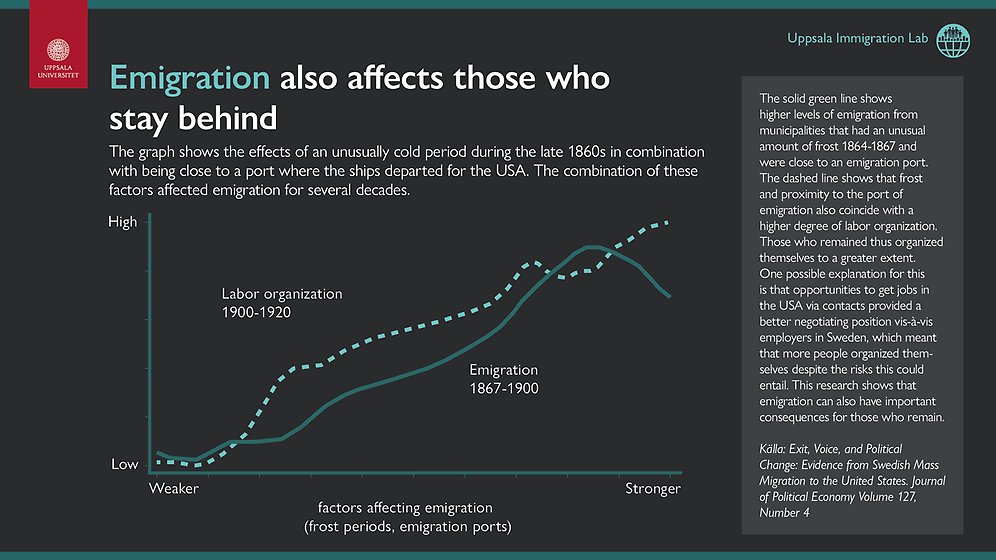Emigration also affects those who stay behind
The graph shows the effects of an unusually cold period during the late 1860s in combination with being close to a port where the ships departed for the USA. The combination of these factors affected emigration for several decades. The solid green line shows higher levels of emigration from municipalities that had an unusual amount of frost 1864-1867 and were close to an emigration port.
The dashed line shows that frost and proximity to the port of emigration also coincide with a higher degree of labor organization. Those who remained thus organized themselves to a greater extent. One possible explanation for this is that opportunities to get jobs in the USA via contacts provided a better negotiating position vis-à-vis employers in Sweden, which meant that more people organized themselves despite the risks this could entail. This research shows that emigration can also have important consequences for those who remain.
About the article
Title: "Exit, Voice, and Political Change: Evidence from Swedish Mass Migration to the United States"
Authors: Mounir Karadja and Erik Prawitz
Published in The Journal of Political Economy

